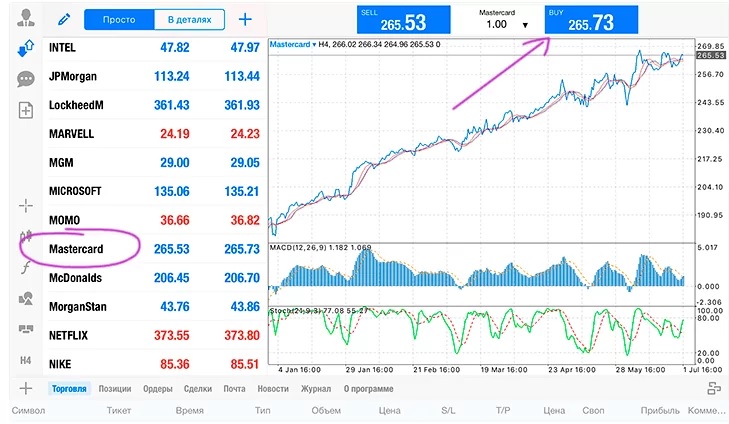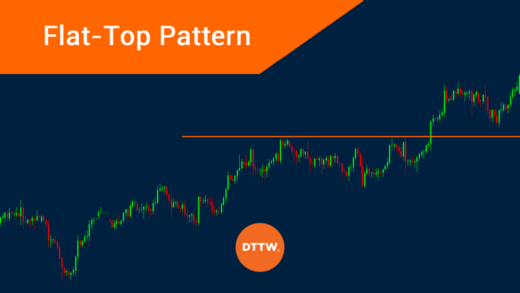“Contract for difference” or “contact for price difference” – this is how the term CFD trading stands for. It is an integral part of modern trading, so every potential participant in trading in financial markets has encountered this concept at least once. But what is CFD on Forex, and how to properly use this tool in everyday trading?
What do CFDs mean?
CFD contracts first appeared in international financial markets in the 90s of the last century. Traders John Wood and Brian Keelan are considered their creators. As the founders themselves stated, their goal was to develop a new format of a financial instrument that would allow trading with leverage and a small initial deposit. Based on these requests, the so-called CFD contract was created.
A CFD is a financial asset (be it a stock, index, commodity or cryptocurrency) that is traded without being physically purchased or sold. Formally, the asset is not purchased, but remains with its owner. And the transaction is carried out only for the difference in the value of the financial instrument.
For example, you open an order to buy a CFD on Apple shares at a market price of $100 per unit. The next day the stock price increased to $120, and at this level the trader closes the deal. This means he made twenty dollars profit on each stock. But he did not technically buy them, did not own them, and was not entitled to receive any dividends. He simply opened a bullish trade and made money from the difference. CFD trading has a number of advantages over standard exchange transactions:
- It is convenient to trade using leverage even with a small initial capital;
- There is no need to register on the exchange and obtain broker status;
- There is no need to waste time on formalizing transactions (since assets are not formally bought or sold);
- CFDs allow you to trade through any brokerage company, without bureaucracy or other restrictions.
According to Wikipedia, the CFD market arose against the background of the lack of financial opportunities for traders from England to fully trade securities. Since at that time few people could afford to purchase and sell such assets without leverage. And bureaucratic difficulties neutralized any opportunity to make money on price differences in a short period of time.
Characteristics of CFD
In modern realities, CFD instruments are often used in trading through brokerage companies, outside of official exchanges. Accordingly, there are traditional securities investors and CFD traders. In the first case, transactions are made through an exchange and involve the official registration of an asset and its transfer to a new owner (for example, you can buy 100 shares of Apple at the market price and become their full owner). In the second case, leveraged transactions are carried out on CFDs of shares, indices or other assets, with the aim of making money only on the price difference.
CFD is a trading format in which a participant gets access to trading even with a small initial deposit. For example, with $50 or $100 you can open full-fledged transactions with a leverage of 1:100 and make good money even with small deviations in value. If you make direct transactions on exchanges, you will need a large initial deposit and multiple bureaucratic obstacles.
Each CFD in Forex has the following characteristics:
- Availability of Forex leverage;
- Opportunities for hedging risks by a trader;
- There are no restrictions on purchases (in particular, there are no age requirements or country of registration of the trader);
- The ability to select any asset, of which there are more than 1000 available (subcategories will be discussed separately below).
Please note that CFDs in Forex are not expressed in dollars, but in pips.
Stocks, indices, precious metals and commodities in CFD trading
The stock market in CFD is the most common, and the number of assets in it reaches several hundred. Each broker provides a different number of financial instruments for trading. In any case, these will be those shares that were presented at the IPO and have passed the public offering stage.
For example, Forex CFD allows you to trade shares of companies such as Google, Apple, Amazon, Facebook and others. The trader’s task is to correctly predict the direction of price movement of these assets.
In addition to stocks, there are also CFDs for oil, gold, silver and various indices (SP500, NASDAQ100, Dow30, DAX and others).
What is the difference between futures and CFDs? Which is more profitable?
Describing in detail what a contract for difference is, one cannot fail to mention the so-called futures. Many financial market participants confuse these trading formats. But the difference lies in the set time of execution of the futures contract. Such transactions are concluded for a specific period with completion on a specified date and time. And contracts for differences in prices are opened for an indefinite period.
Another difference between CFDs and futures is the possibility of fractional trading. You can open transactions on CFDs in FX through any broker for small amounts, starting from 0.01 lots. At the same time, in futures the minimum trading volume is 1 lot (1 unit of asset). And if we study the number of available CFD instruments on exchanges, we will notice that in contracts for difference the number of available assets exceeds hundreds and even thousands of units. But futures have a limited list of commodity items. They are usually concluded for raw materials: agricultural products or fuel.
What these concepts have in common is only the absence of property rights.
From this we can conclude that all so-called CFD instruments compare favorably with futures contracts and traditional exchange trading.
Features of choosing CFD contracts in trading?
Before trading CFDs, you must register with a broker and open an account. Typically, companies offer Forex CFD trading on stocks, indices, futures, commodities and precious metals. The number of assets will vary. But the trading format will not change depending on the asset category.
Traditionally, there are long and short positions. The first ones involve trading on long-term orders, for a period from several days to several months. Short positions allow you to speculate on the value of assets for several hours or trading days.
When forecasting CFDs on Forex, technical and fundamental analysis of stocks is used. In most trading terminals you can use indicators and oscillators on the chart. They will help in the long or short term to predict the movement of value for the selected financial instrument.
Regardless of the broker you choose, you can trade the described financial instruments through any trading terminal. According to statistics listed on the CFD page on Wikipedia, stock trading on MT4 ranks first among traders in Europe and the CIS. Shares are the most popular financial instruments of market participants.
When describing what CFD trading is, one cannot fail to mention the key trading conditions for traders. For example, companies set commissions for the execution of such transactions, which are expressed in spreads. And usually the spreads are a few pips. And it doesn’t matter whether CFD trading is carried out on shares of Russian companies, or whether the participant is trading securities of a foreign business. The rules are the same for everyone.
Trading of contracts for differences in prices (stocks, indices, bonds, raw materials and metals) is carried out through trading terminals. Special programs have built-in tools for effective technical and fundamental analysis. This is the secret to successful CFD trading.



